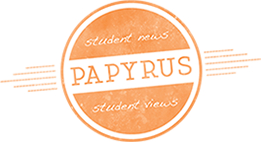
In 1999, Nintendo released Super Smash Bros 64 to wild success. The game sold over 5 million copies worldwide and founded a new subgenre of fighting games: The platform fighter. Just two years later, Super Smash Bros. Melee released for the GameCube. Nintendo found greater success, selling over 7 million copies.
At first, the Smash series stood alone in the genre of platform fighter games. Sure, cheap knock-offs like Playstation All-Stars Battle Royal and Cartoon Network: Punch Time Explosion popped up. But Smash was the only game that stood on its own.
Until recently.
The rise of indie gaming has led to small studios making their own takes on the popular Super Smash Bros. Melee formula. While only meant as a party game for fans, Melee spawned something much bigger. It has one of the largest competitive gaming scenes of all time. Indie games like Brawlhalla, Icons: Combat Arena, and Slap City have made names for themselves as platform fighters influenced by Melee and have made small competitive scenes.

But for me, the standout is Rivals of Aether. Rivals changes the old formula of Smash in ways that solve some frustrating problems and make for some great gameplay. It plays fast, fluid, and fun. Its 8-bit inspired art style, great character designs, fast but thoughtful mechanics, and colorful world combine to make a unique experience in platform fighters. Despite wearing its Melee influence on its sleeve, Rivals has enough differences in its mechanics to make it feel distinct.
Grabs are absent from Rivals. In Melee, a grab is a move where one character grabs the other to deliver a few hits (called pummels) and then throws them. The absence of grabs, pummels, and throws make match times less inflate and lets players have control of their character’s movement more often.
Rivals also replaces Melee’s L-cancelling with a new mechanic called hitfalling. L-canceling is when the player presses L or R when landing with an attack from the air to start their next move quicker. Hitfalling allows the player to hit the ground quicker once they hit a move in the air letting them extend combos as if they had used L-cancelling. This means fewer button presses to pull off combos.

Rivals replaces the shield mechanic from Smash where a button press would make a temporary shield to protect from attacks with a parry. With a well-timed button press, an opponent’s attack is blocked and they are stunned. This is a great option if you are good at timing, and they can guarantee big hits. But you can’t hold down the button like shields in Smash. This speeds up Rivals‘ gameplay and rewards aggressive strategies. Parrying also reflects projectiles back at opponents, preventing players from dominating by sitting back and hurling projectiles.
Recovering—getting back on stage after being knocked off—is completely different in Rivals than in Melee. Players cannot grab the ledge of the stage in Rivals. Instead, all characters can wall jump, and gain back their third jump when they do so. In Rivals and Smash, every character has three jumps. The first two are normal but the third uses the character’s special power in some way. This makes recovering a more difficult and creative task in Rivals. Players also don’t become invulnerable for a moment when they land on stage, makes the game faster by making edgeguarding—preventing a character from getting back on stage—more rewarding.
Rivals‘ characters are a great balance of old and new ideas. The leafy wolf Sylvanos takes some inspiration from Ivysaur in Project M—a fan-made mod of Super Smash bros. Brawl that makes it more like Melee. But Sylvanos creates rows of grass on each platform he uses to power up his moves. Absa, the anthropomorphic electric goat, has some abilities from Pikachu, Zelda, and Mewtwo, but plays as uniquely as her design. Veteran Smash players who pick up Rivals will get a sense of discovery and déjà vu as they experiment with each character’s movesets.

Image via RelaxAlax on YouTube
Rivals keeps some important mechanics like directional air-dodges and wavedashes. A directional air-dodge is a move in Melee done by pressing the L or R button and a direction. It gives a second of invincibility where a player cannot be hit while moving them in the direction that was pressed. Wavedashing is when you air-dodge into the ground, allowing a character to slide, moving faster and less predictable. It is one of the primary reasons Melee plays so much faster than other Smash games.
These mechanical tweaks are a microcosm of Dan Fornace’s design philosophy. He knows why people want to play Melee-esque platform fighters. But he has the confidence to improve the gameplay and make it his own. You can like whatever platform fighter you want, but for me, Rivals is my favorite. Maybe even after Super Smash Bros. Ultimate releases.
Actually, I take that back. If PlayStation Allstars is your favorite, your opinion is invalid.
Media by Ben Casey



























